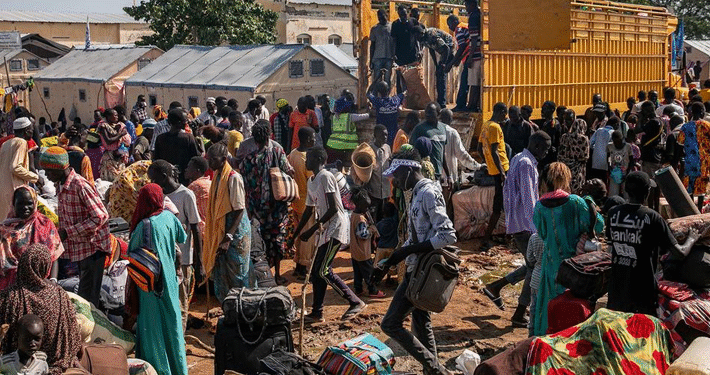The United Nations High Commissioner for Refugees (UNHCR) has disclosed a shocking increase in the number of people uprooted by conflict, violence, and persecution globally, reaching alarming highs as humanitarian aid continues to diminish. A notable exception is an uptick in returns, especially to Syria.
According to the UNHCR’s recently published Global Trends Report, the count of forcibly displaced individuals reached 122.1 million by the end of April 2025, a rise from 120 million the previous year. This trend signifies nearly ten years of consecutive increases in the number of refugees and those compelled to flee. Key factors driving this displacement include significant conflicts in Sudan, Myanmar, and Ukraine, alongside a persistent failure to halt the fighting.
Filippo Grandi, UN High Commissioner for Refugees, commented, “We are navigating an era of severe volatility in international relations, where contemporary warfare has engendered a fragile and distressing landscape characterised by acute human suffering. We must renew our commitment to seeking peace and developing lasting solutions for refugees and others who have been forced to abandon their homes.”
The report indicates that among the forcibly displaced, 73.5 million individuals have been displaced within their own nations, marking an increase of 6.3 million from the previous year, while 42.7 million are refugees fleeing abroad. Sudan has now emerged as the leading global crisis for forced displacement, with 14.3 million refugees and internally displaced persons (IDPs), surpassing Syria (13.5 million), followed by Afghanistan (10.3 million) and Ukraine (8.8 million).
The report also reveals that, contrary to popular belief in wealthier nations, 67% of refugees reside in neighbouring countries, with low and middle-income countries hosting 73% of the global refugee population. Alarmingly, 60% of those forced to flee do not leave their home country.
While the number of forcibly displaced individuals has nearly doubled over the last decade, funding for UNHCR has remained at similar levels to those of 2015, amid severe cuts to humanitarian assistance. This situation is unsustainable, leaving refugees and others fleeing danger increasingly vulnerable.
Grandi added, “Despite the significant cuts, we have seen glimmers of hope over the past six months. Almost 2 million Syrians have successfully returned home after more than a decade of displacement. However, the situation remains fragile, and they require our assistance to rebuild their lives.” In total, 9.8 million forcibly displaced individuals returned home in 2024, including 1.6 million refugees—the highest figure in over twenty years—and 8.2 million IDPs, the second-highest ever recorded.
Many of these returns, however, occurred under adverse political or security conditions. For example, a substantial number of Afghans were forced to return to Afghanistan in 2024 under dire circumstances. Simultaneously, significant new forced displacements were reported in countries like the Democratic Republic of the Congo, Myanmar, and South Sudan.
The report calls for ongoing funding of UNHCR programmes, which are vital for saving lives, aiding returning refugees and IDPs, and enhancing basic infrastructure and social services in host communities, representing a crucial investment in both regional and global security.











